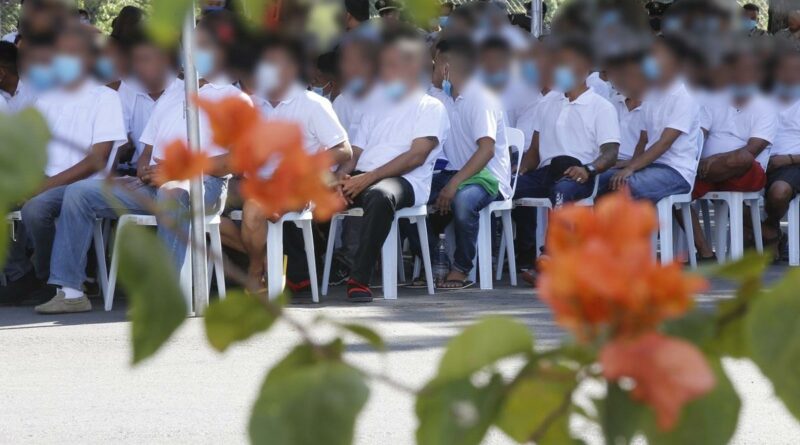COA: 67% of Philippines” jails over capacity
More than two-thirds or 323 of the 478 jail facilities in the country are overcrowded, with one reaching a congestion rate of 2,639%, the Commission on Audit (COA) said.
“At present, there are 323 jail facilities that are considered heavily congested with occupancy rates ranging from 101 to 2,739 percent or congestion rates of one to 2,639 percent, which is not in conformity with the United Nations Minimum Standard Rules for the Treatment of Prisoners and BJMP Manual on Habitat, Water, Sanitation and Kitchen in Jails as cited above,” COA said in its annual audit report on the Bureau of Jail Management and Penology (BJMP).
The report said that the country’s jail population was 127,031 as of December 31, 2022–already nearly three times the total ideal capacity of 46,702, resulting in unhealthy living conditions for persons deprived of liberty (PDLs).
“As of December 31, 2022, the Bureau has a total of 478 jail facilities with a total jail population of 127,031, which requires an ideal cell area of 597,045.70 square meters based on the 4.7-square-meter ideal habitable floor area per inmate. Considering that the Bureau only has a total cell area of 219,498 square meters with a total ideal capacity of 46,702, 377,547.7 square meters of jail facilities are still needed to address jail congestion,” COA said.
Region 4A posted the largest number of congested jails with 60, followed by the National Capital Region and Region 7 with 36 each.
Region 6 also recorded 31 congested jails, while Region 3 logged 29.
The rest of the regions had around six to 15 congested jails each.
Of the 323 congested jails, Dasmarinas City Jail’s Female Dormitory in Region 4A is the most overcrowded facility with a maximum congestion rate of 2,639%, followed by San Mateo Municipal Jail’s Male Dormitory (2,523%), also in Region 4A. The Muntinlupa City Jail’s Male Dormitory in NCR ranked third with a congestion rate of 2,266%.
Can’t afford bail
State auditors added that the increase in the PDL population “can be attributed to the increase in the new admittance of PDLs in view of the government’s campaign against illegal drugs and the court’s slow or delayed actions/decisions on pending cases due to lack of judges; postponement of hearings; and slow disposition of criminal cases that carry the penalty of reclusion perpetua or life imprisonment.”
COA also cited the “non-posting of bail of qualified detainees, who are from below poverty line and cannot afford to post bail” as a reason for some PDLs still being imprisoned.
COA cited records of the Directorate for Operations which showed that out of the 127,031 PDLs detained in 478 jails, a total of 113,686 PDLs or 89 percent are awaiting/undergoing trial and/or final judgment while 9,854 or eight percent are those sentenced for less than three years.
The remaining 3,491 are insular PDLs or those with sentences of more than three years to death.
Land limitations
“Moreover, the land where some jail buildings were constructed have limited spaces; hence, construction and/or expansions of existing jails were not made possible,” COA added.
The BJMP rules provides the following specification for cell capacity:
ideal habitable floor area per inmate: 4.7 square meters maximum number of inmates per cell: 10 maximum number of bunks beds: five units, two level wash area (for utensils, hand washing): one unit water closet (toilet bowl): one unit bath area: one unit
COA said that while the BJMP “has been continuously professionalizing the jail services as well as unceasingly providing the basic needs of PDL such as food, drugs and medicines, rehabilitation supplies,” congestion has “always” been one of its biggest challenges.
“Congestion in jails, if not fully addressed, will continue to result to health and sanitation problems and also to the increased gang affiliation of PDLs for survival. These PDLs hold on to gangs or ‘pangkat’ where they find protection, network of social support, and most importantly, access to material benefits, which are scarce in highly congested facilities,” the state auditor said.
As part of its recommendations, COA called for speedy construction of jail facilities and completion of perimeter fences around some newly constructed jail facilities that are still not able to be fully used due to the non-completion of the fences.
In response, the regions with the most number of congested jails vowed to pursue reforms.
BJMP NCR says there are strong and broad linkages with various public and private sector to decongest jails and, as a result, the perimeter fences project is already at 92% completion rate for Phase 1, 50% completion rate for Phase 2, with overall completion target date is on April 30, 2023, and August 25, 2023, respectively.
BJMP Region 3, on the other hand, said it is already addressing deficiencies of the three remaining unoccupied jails to speed up their occupancy and is providing paralegal service units for the speedy disposition of cases of qualified PDL to decrease congestion.
BJMP Region 4A, for its part, reported that the Batangas City government started the construction of its perimeter fence on January 30, 2023, as the result of continuous lobbying to the LGU by the Regional Office and Wardens of Batangas city. The needed logistics and manpower, however, are still being prepared to fully equip the General Nakar District Jail in terms of its operational and security requirements.
In addition, BJMP Region 4A said the Chief Logistics Division together with the Regional Engineer will conduct a re-assessment of the proposed lot to be donated by the LGU of Lemery, Batangas for the possible construction of the New Jail Building.
Meanwhile, BJMP Region 12 said a budget proposal was already submitted during the Regional Development Council meeting to grant/approve the construction of more additional jail buildings to address future congestion.
Lastly, the BJMP’s national headquarters said it is attending to the financial needs of the Regional Office for the installation of water and electricity facilities and other amenities for jail sites, especially for the unoccupied newly constructed jail buildings. — BM, GMA Integrated News




